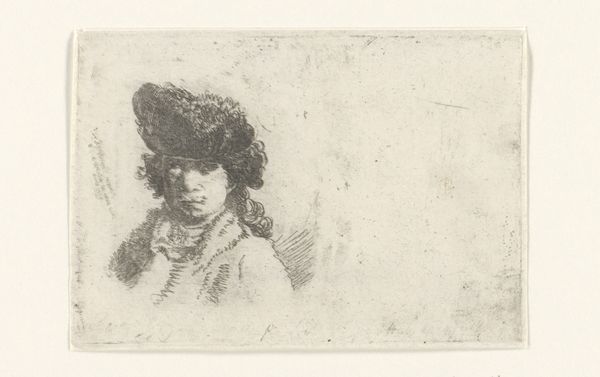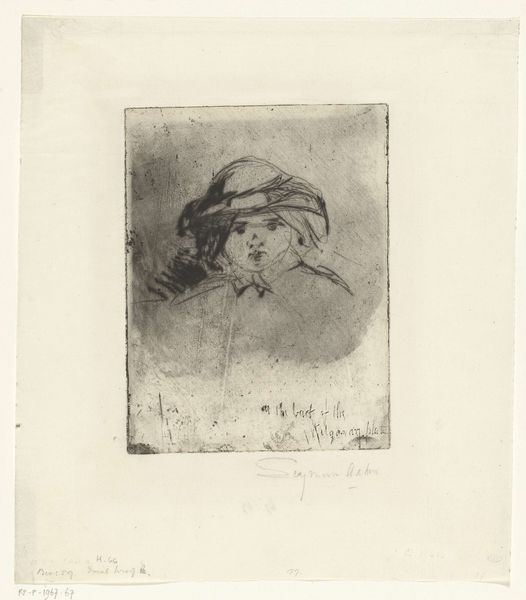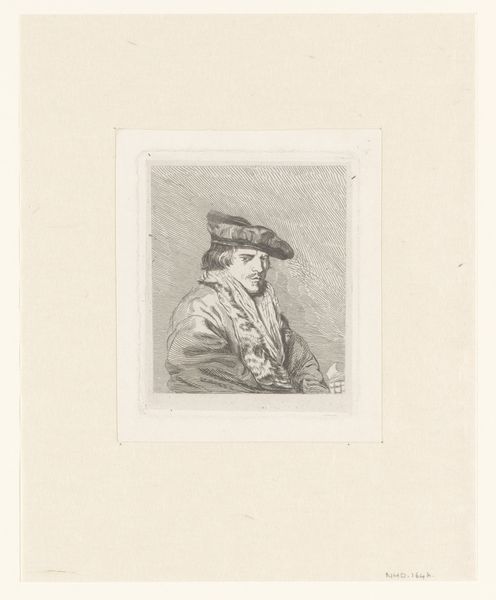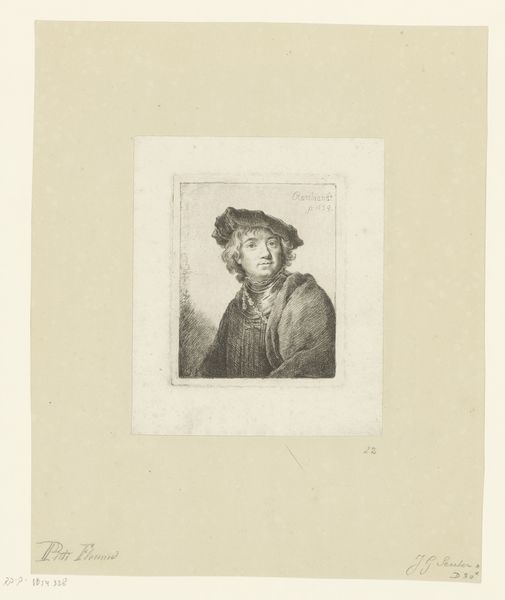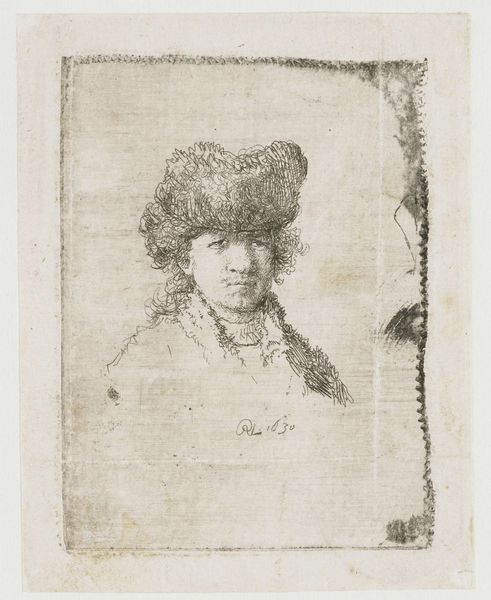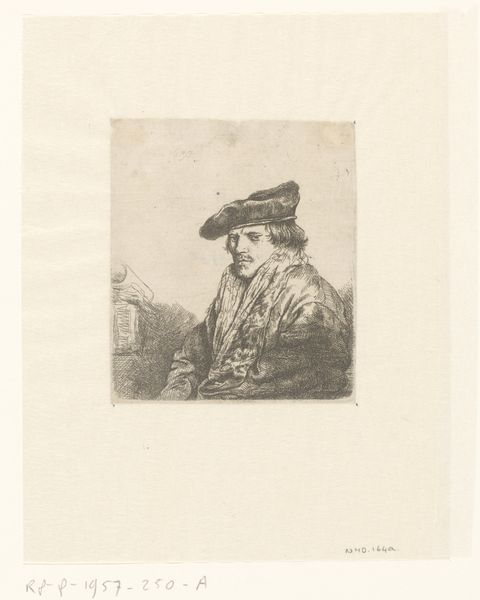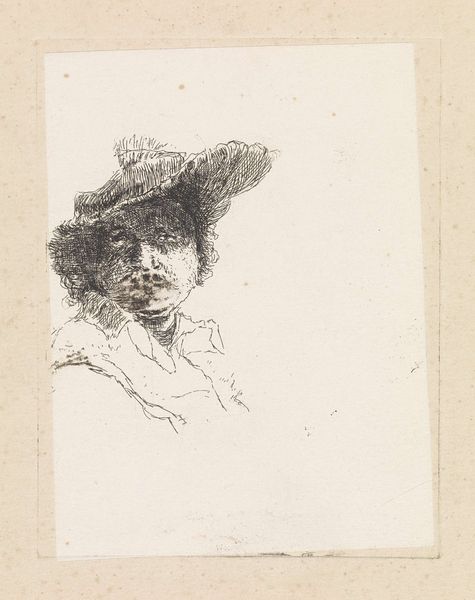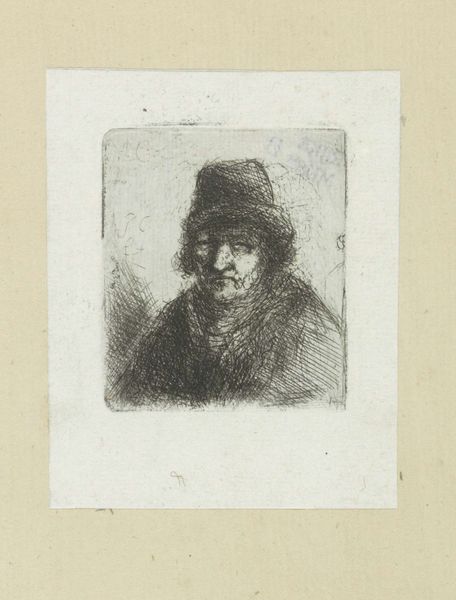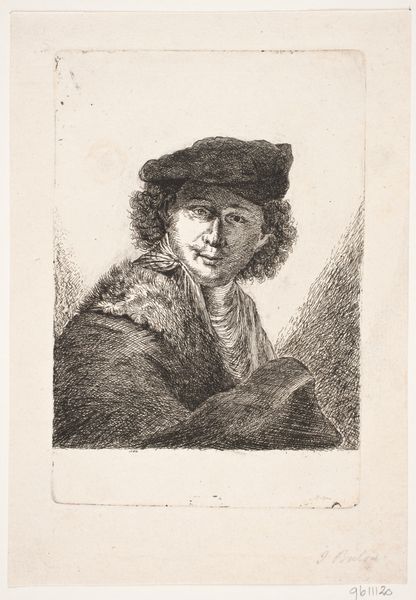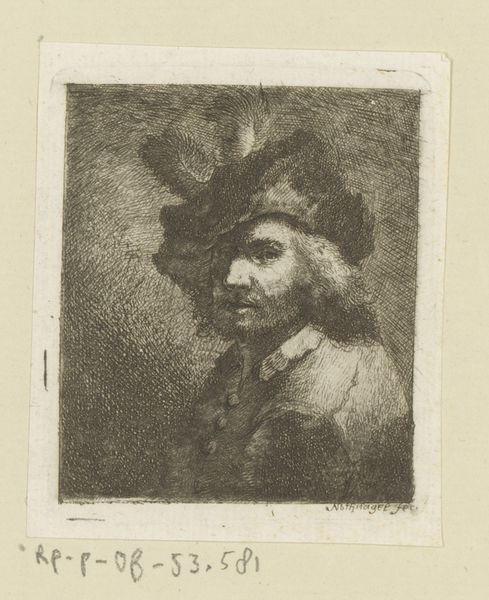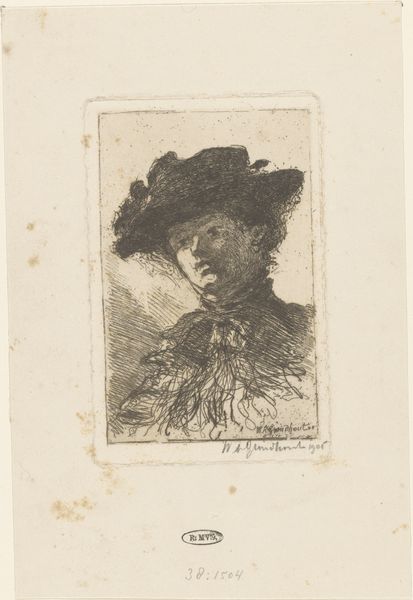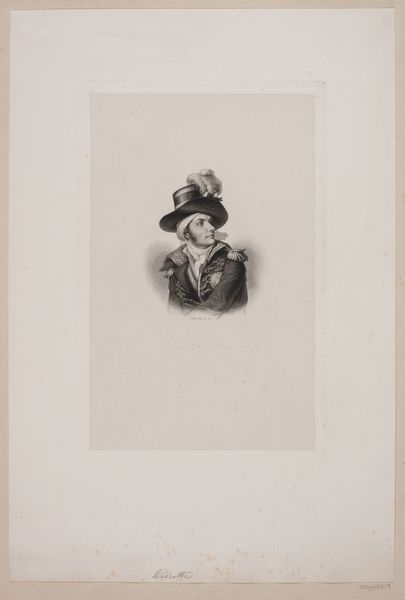
print, etching
#
portrait
#
baroque
# print
#
etching
Dimensions: height 74 mm, width 62 mm
Copyright: Rijks Museum: Open Domain
This small etching, "Self-portrait in a fur cap: bust," was made by Claude Henri Watelet in the 18th century using an etching technique. Watelet used a metal plate, coated with wax, and then scratched an image into the wax, exposing the metal underneath. The plate would then be bathed in acid which bit into the exposed lines, creating grooves. The plate would then be inked and pressed onto paper. What's fascinating is how this process influences the image itself. The etching is characterized by fine, delicate lines, building up tone and texture. You can see this especially in the rendering of the fur cap, where the density of lines creates a sense of depth. This meticulous process allowed Watelet to achieve a remarkable level of detail, despite the small scale of the work. Consider too, the social context. Etching, while demanding skill, allowed for multiple reproductions, reflecting the growing print culture of the 18th century. It’s a medium that democratized art, making it more accessible to a wider audience. So, when we look at this self-portrait, we’re not just seeing an image of an artist, but also a reflection of broader social shifts. It's a testament to how materials and making can shape our understanding of art.
Comments
No comments
Be the first to comment and join the conversation on the ultimate creative platform.
